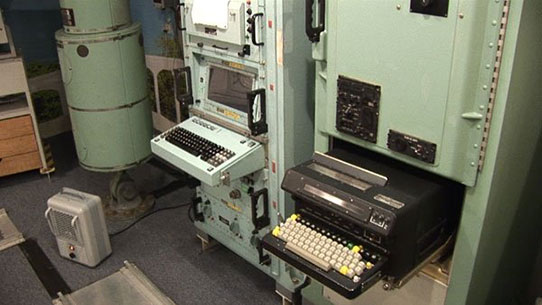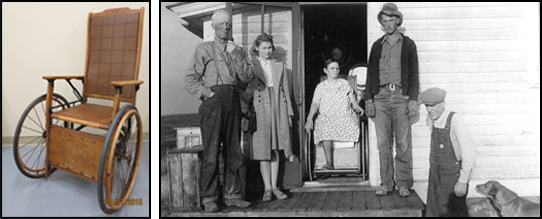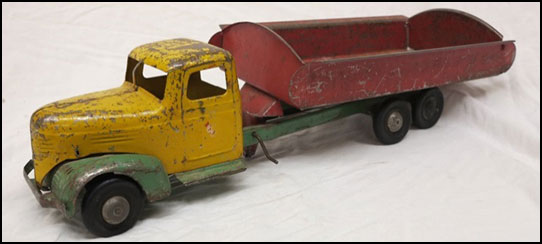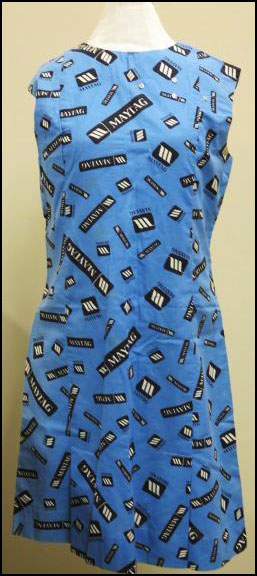I’ve said it before, and I’ll say it again: we get a lot of historical and genealogical research requests, working in the Archives. They range from simple (“Can you make a copy of this page from The Wonder of Williams: The History of Williams County?”) to the complicated (“I was in here once ten years ago and looked through five different collections, where I found a letter from a woman homesteader. I should have made a copy of it then…can you help me find it now?”).

Warning: This post is interactive, with few pictures and lots of color.
Knowing where and how to look, and what your sources and available options are, will help you to get started in any quest. We do have a lot to draw from, as you may recall from my mini tour of the Archives in my first post—newspapers, manuscript collections of all sorts of topics, state records, pictures, film, audio, posters, scrapbooks, etc. So, where do you start?
The answer is…it depends. Not every path works for every type of research. The key is to get as much information as possible, and then start looking wherever you can, in whatever might apply.
Doing research often kind of reminds me of reading a Choose Your Own Adventure Book. When I was younger, these books were kind of a big deal. You start off with a basic story line, typically written with second person narration. Something occurs (something cataclysmic, of course). Then you get a choice. Like:
You’ve fallen into a well. Your dog is nearby. You…
Call his name, in hopes that he will come to you! Turn to page 5.
Ignore him, and decide to try and climb up the rope you notice hanging down. Turn to page 59.
You can always change your mind, and you can always try something else, so every time you read the book, you get something different. Unless, of course, you read all of the endings first so you could avoid the pitfalls for the character ending in horrible death, and then pick your favorite ending, like I always did. Not quite what you were *supposed* to do, but it worked for me!
Let’s try it. Here’s an example, similar to requests we’ve received (but made up for these purposes):
I want to find out what happened to my grandfather’s sister, who came somewhere around North Dakota sometime after 1870 and may have died or left before 1920. Her name was Ida Hanson, but I don’t know what her name was after she got married (if she got married). Her brother’s name was Ole Hanson. He settled in Wisconsin. Can you help me?
Step 1: Gather Information
Proceeding with this request can be tough on many different levels.
- We do not know how accurate this information is. There is a line that is walked when individuals rely on a family story. This requestor already has admitted they do not know if Ida married. So we do not know how accurate the requestor’s knowledge is.
- The information requested is for a woman in the territorial and early statehood days. We have some written records from this time period, but not too many. Also, many records of the time mainly documented a male presence, referring to husbands and fathers over wives and daughters.
- We may not be able to answer this question simply because it is so broad. If we don’t find something like, say, an obituary or biography, we may not have “what happened” in our collections.
- Any name Hanson is sort of like John or Jane Smith up here. And might be spelled Hansen, instead
So, what do you do?
Option #1
You assume the requestor is unsure and needs to recheck sources. Contact them by going to the green box.
Option #2
You have already checked with the requestor, or assume the requestor is correct in part or all of the information they have. Go to Step 2.
Step 2: Apply Sources
Now that we are assuming the request is possible, we have to start checking. What can we check? Perhaps we can take a look at a cemetery index to see if there is a death date. But we are not sure where she settled, other than (possibly) North Dakota, and our cemetery indices are by county only. And if she married, when she passed away, she would have been buried under her married name, not her maiden name. The state death index we have access to is 1900 on, and not before. We have some marriage records pre-1925, but not all, and they are separated by county, so we’d need to know some idea of location if we check those sources. So maybe we can take a look at a census record. Through sites like Ancestry.com (which we have a free library subscription access to), we can do keyword searches by name and state and hope for the best.
What do you do?
Option #1
You take a look at the census, and find a match! A few thousand, in fact, and not all match the facts you have. You assume that the first unmarried Ida Hanson (within reason) is a good possibility, and check to see if there is a listing in the death index for a woman who died and has a birth date around the same time. Skip to the orange box, you lucky duck!
Option #2
You check marriage record indices in hopes that you will find an Ida Hanson marrying some bloke that looks right. Of course, you can only do this if you have a county of marriage, so if you don’t, start over! If you do, jump to the purple box.
Option #3
You take a look at some of the other indices available online, like the biography index we use through the Institute of Regional Studies on a whim. Go to the yellow box.
Option #4
You bang your head against a wall a few times, and wish one of your coworkers had taken this request instead. Take something for the headache, and go to the green box.
Step 3: The Solution
So, did you make it to the end? Or did you read all the boxes through, to find the answer quickly? Sometimes, it would be nice to have that option—to jump through to the end of a search—but the journey of research is also part of the joy of the resolution. (I think that’s part of the appeal of these books.) You have earned your answers!
Research can be difficult, and can take many different paths, but using as much information as you have and knowing the different, available avenues can make it easier and fun. Are you ready to start on your own adventure?
[accordion collapsed]
GREEN BOX
Requestor confirms that the Ida Hanson in question did stay in North Dakota post-1900 and presumably did marry. In fact, she was actually born sometime after 1870, because Ida’s mother was born in 1870. The whole family came to North Dakota in the 1900s. Requestor states it was probably Ward County. Go to Step 2.
ORANGE BOX
 Unfortunately, there are too many Ida Hansons to pick and choose one and hope for the best, especially without more information! This can work, sometimes, but not with this number. Sorry, lucky duck, but you have to recheck your facts. Jump to the green box!
Unfortunately, there are too many Ida Hansons to pick and choose one and hope for the best, especially without more information! This can work, sometimes, but not with this number. Sorry, lucky duck, but you have to recheck your facts. Jump to the green box!
PURPLE BOX
No hits here, but you decide to check the marriage index through the Vital Records Department (post July 1925) that is accessible in the Reading Room and see that an Ida Hanson married a Clement Green in Ward County in 1936. If you think this is correct, jump to the red box. If you think this is wrong, go to the green box!
RED BOX
You look up Ida Green in the state death index through the Vital Records Department in the Reading Room and get a hit; so you go to the newspaper and find that at her death in Minot in 1965, she was survived by five children, her husband, and a brother, Ole, in Wisconsin! This seems likely that it is her. Hooray! Go to Step 3.
YELLOW BOX
You typed in the first name in the search bar and discovered that there is a rare listing for a woman! And she is listed as Ida Hanson Green. Interesting! Could this be her? Jump to the red box!
[/accordion]






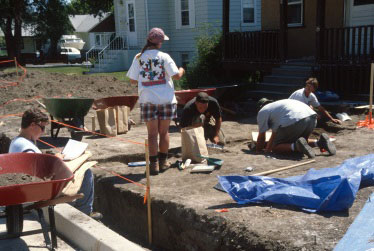
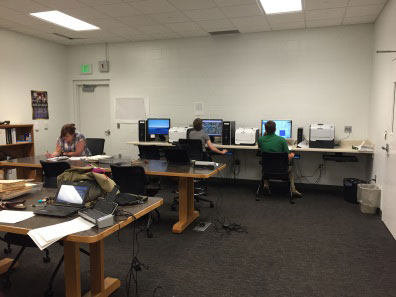

 Amy Bleier is a Research Archaeologist in the Archaeology and Historic Preservation Division. One of Amy’s tasks is to assist with the production of the North Dakota Archaeology Awareness poster.
Amy Bleier is a Research Archaeologist in the Archaeology and Historic Preservation Division. One of Amy’s tasks is to assist with the production of the North Dakota Archaeology Awareness poster.
 Unfortunately, there are too many Ida Hansons to pick and choose one and hope for the best, especially without more information! This can work, sometimes, but not with this number. Sorry, lucky duck, but you have to recheck your facts. Jump to the
Unfortunately, there are too many Ida Hansons to pick and choose one and hope for the best, especially without more information! This can work, sometimes, but not with this number. Sorry, lucky duck, but you have to recheck your facts. Jump to the 